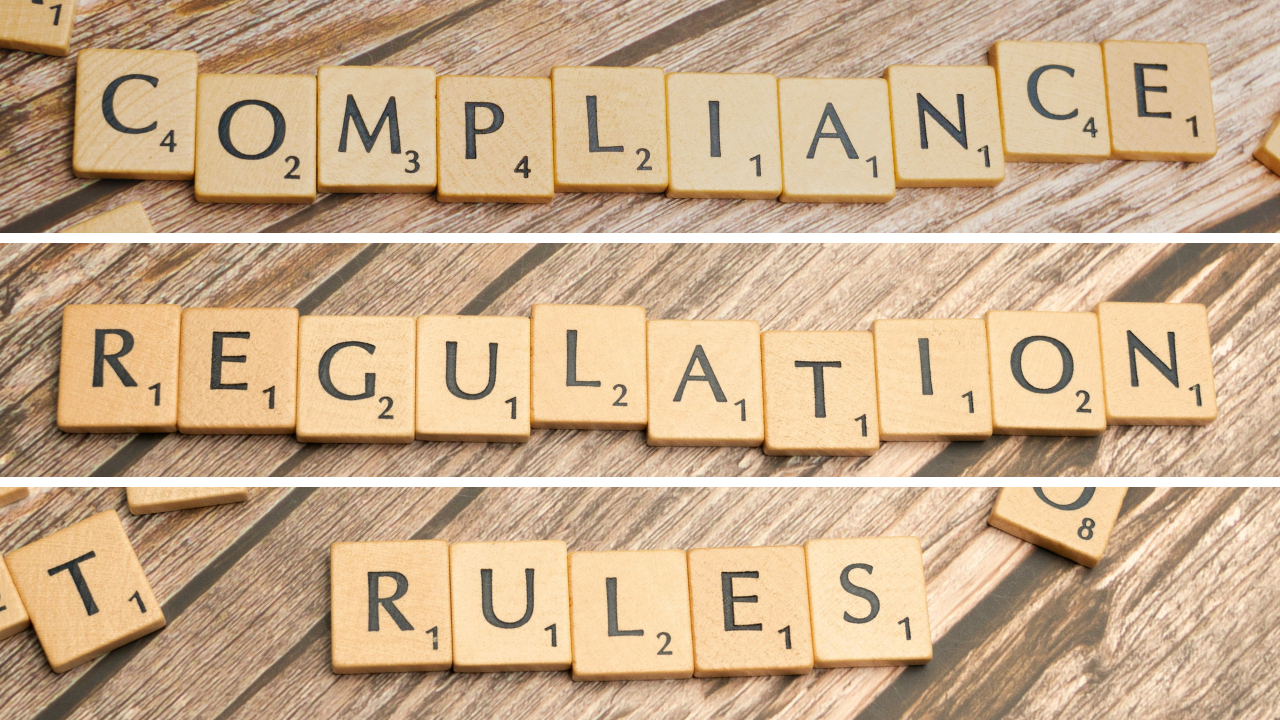This comprehensive guide will walk you through the essential steps to ensure compliance with the guidelines of leading web traffic platforms like Google, YouTube, Facebook, Amazon, Microsoft, Outbrain, Taboola, and Revcontent.
Key Takeaways:
- Understand the importance of compliance with traffic platform guidelines to avoid penalties and maximize campaign effectiveness.
- Learn specific requirements for each major platform to maintain good standing and optimize your online presence.
- Discover best practices for staying updated with guideline changes and implementing them effectively in your strategies.
Understanding the Importance of Platform Compliance
Compliance with paid traffic platform guidelines is not just about avoiding penalties; it's about building a trustworthy relationship with the platform and its users. Adhering to these rules ensures that your content or advertisements are seen by the right audience and that your account remains in good standing. Non-compliance can lead to account suspension, reduced reach paid traffic, or even legal consequences.
The Consequences of Non-Compliance
Ignoring the guidelines set by traffic platforms can have severe repercussions. From the immediate impact of having traffic to your website or content removed or your ad campaign paused to the long-term effects on your brand's reputation, the risks of non-compliance bot traffic, are significant. It's essential to understand that these guidelines are in place to protect users and maintain a fair and safe online environment.
General Guidelines for Platform Compliance
The first step to compliance is understanding the general guidelines that apply across most platforms. These typically include rules against misleading content, hate speech, and the promotion of illegal activities. Ensuring that your content is honest, respectful, and lawful is a baseline for compliance on any platform.
Best Practices for Universal Compliance
To stay universally compliant, regularly review the terms of service and community guidelines of each platform you use. Create a checklist of these general rules and incorporate them into your content creation and advertising processes. This proactive approach will help you avoid unintentional violations.
Google's Compliance Checklist
Google's guidelines are comprehensive, covering everything from SEO practices to display advertising and standards. Ensure that your content is valuable and relevant to your target audience, and that your ads meet Google's technical and quality standards. Avoid common pitfalls like keyword stuffing and deceptive practices.
Staying Updated with Google's Changes
Google frequently updates its guidelines to adapt to new technologies and user behaviors. Subscribe to Google's official blogs and forums to stay informed about these changes. Implement updates promptly to maintain compliance and take advantage of any new opportunities they provide.
YouTube's Content and Advertising Policies
YouTube, owned by Google, has its own set of guidelines focusing on video content. These include rules on copyright, community standards, and monetization. Your videos should be original, appropriate for a broad audience, and free of any content that could be considered harmful or dangerous.
Navigating YouTube's Monetization Rules
If you're looking to monetize your YouTube channel, pay close attention to the platform's monetization policies. These are often stricter than the general content guidelines and require a thorough understanding to ensure that your content is eligible for revenue generation.
Facebook's Community Standards
Facebook emphasizes community safety and respect. Its guidelines cover a wide range of content, from personal posts to business advertisements. Ensure that your content does not promote violence, hate speech, or misinformation. Transparency in advertising is also a key requirement on Facebook.
Adhering to Facebook's Advertising Policies
Facebook's advertising policies are designed to protect its users from misleading or harmful ads. Familiarize yourself and paid ad campaigns with the specifics of these policies, including prohibited content, targeting rules, and ad formatting requirements. Regularly review your ad campaigns for compliance.
Navigating General Guidelines for Platform Compliance Across Various Platforms
When it comes to ensuring adherence to platform compliance, understanding the general guidelines that span across various traffic platforms is crucial. These guidelines often encompass content quality, user safety, and advertising standards. For instance, Google's compliance checklist emphasizes the importance of creating content that is not only relevant and engaging but also trustworthy and transparent. This means avoiding misleading information, respecting copyright laws, and ensuring that all ads are appropriate for the audience they target. By familiarizing yourself with these overarching principles, you can create a foundation for compliance that applies to multiple platforms.
Moreover, these general guidelines are not static; they evolve as the digital landscape changes. It's essential to stay proactive by regularly reviewing and updating your knowledge of these guidelines. Google, for example, frequently updates its algorithms and policies to improve user experience and combat spammy or low-quality content. Keeping abreast of these changes can help you maintain compliance and avoid penalties. Remember, while each platform may have its specific rules, the core tenets of honesty, respect for intellectual property, and user safety are universal.
Leveraging Google's Transparency Report for Compliance Insights Understanding the nuances of platform compliance can be challenging, but Google's Transparency Report offers a wealth of information that can guide you in the right direction. This report provides detailed data on the requests Google receives from governments and courts around the world to remove content or provide user data. By analyzing these insights, businesses and content creators can better understand the types of content that may violate Google's guidelines, ensuring they remain compliant and avoid potential legal issues.
The Transparency Report can serve as a proactive tool for identifying trends in content removals and requests, which can inform your content strategy. For instance, if there's an uptick in requests to remove certain types of content due to legal reasons, you can preemptively adjust your content to avoid similar pitfalls. Staying ahead of the curve not only helps with compliance but also positions your website owners or platform as a responsible and trustworthy source of information or advertising.
Incorporating Google's Search Quality Evaluator Guidelines into Your Compliance Strategy Google's Search Quality Evaluator Guidelines are a critical resource for anyone looking to comply with the the search engine giant's expectations. These guidelines outline what Google considers to be high-quality content, which directly impacts search rankings and visibility in search engines. By understanding and implementing these standards, you can ensure that your content not only adheres to compliance requirements but also provides value to users, which is a core principle of Google's platform.
In practice, incorporating these guidelines means creating content that demonstrates expertise, authoritativeness, and trustworthiness (E-A-T). This involves thorough research, citing credible sources, and presenting information in a clear and accurate manner. By doing so, you not only comply with Google's guidelines but also enhance the site and user experience, which can lead to increased engagement, higher rankings, and ultimately, greater success on the platform. Leveraging Google's Transparency Report for Compliance Insights Understanding the nuances of platform compliance can be significantly enhanced by leveraging Google's Transparency Report.
This resource provides invaluable data on how Google enforces its policies, which can guide users in aligning their content, marketing, and advertising strategies with Google's expectations. By analyzing trends in policy enforcement and the types of content that have been flagged or removed, advertisers and content creators can better anticipate potential compliance issues and adjust their practices accordingly.
Furthermore, the Transparency Report offers a breakdown of requests from governments and courts around the world to remove content or provide access to user data. This information is critical for those operating in multiple jurisdictions, as it helps to understand the legal landscape and the general guidelines for platform compliance that may vary from one region to another. By staying informed through Google's published insights collecting data, businesses can proactively manage their online presence to ensure continuous compliance.
Incorporating Google's Search Quality Evaluator Guidelines for Compliance Google's Search Quality Evaluator Guidelines are a cornerstone of search engine optimization and for understanding what Google considers high-quality content, which directly impacts compliance and visibility video ads on the platform. These guidelines are used by human evaluators to assess the quality of search results, providing a framework for what Google aims to deliver to its users. By aligning content with these standards, creators and marketers can work towards meeting the general guidelines for platform compliance, ensuring their content is both valuable to users and favored by Google's algorithms.
In practice, this means focusing on the creation of content that demonstrates expertise, authoritativeness, and trustworthiness (E-A-T). Content that meets these criteria is more likely to comply with Google's quality expectations and perform better in search rankings. Regularly reviewing and applying the principles outlined in the Search Quality Evaluator Guidelines can lead to improved compliance, high quality traffic, better user engagement, organic traffic, and ultimately, a stronger online presence on Google's platforms.
Implementing Google's Compliance Checklist for Enhanced Platform Adherence
Google's compliance checklist serves as a comprehensive guide for creators and advertisers aiming to stay within the bounds of the platform's policies. This checklist includes ensuring that content is designed for a positive user experience, which means it should load quickly, be mobile-friendly, and be accessible to all users. Additionally, it should adhere to Google's Webmaster Guidelines, which discourage practices like cloaking, sneaky redirects, and automated content generation. By following these guidelines, you can improve your site's visibility and user engagement, which are critical factors in SEO and overall online success.
Furthermore, Google's compliance checklist extends to its advertising policies. Advertisers must ensure that their ads are not only relevant and useful but also free from prohibited practices such as misrepresentation and malicious software. It's important to conduct regular audits of your ad campaigns to ensure they align with Google's advertising guidelines. This not only helps in avoiding account suspensions but also contributes to building trust with your audience. By integrating Google's compliance checklist into your regular operations, you can foster a more secure and reliable online environment for both users and advertisers.
Amazon's Seller and Advertising Guidelines
As a marketplace, Amazon has strict rules for sellers and advertisers to maintain a trustworthy shopping environment. Product listings must be accurate and comply with all applicable laws. Advertisements should not mislead customers or promote prohibited products.
Keeping Up with Amazon's Evolving Standards
Amazon's guidelines can change in response to new regulations or market conditions. Stay informed by joining Amazon seller forums and subscribing to their official communications. Quick adaptation to guideline updates is crucial for maintaining a successful presence on the platform.
Microsoft's Advertising Policies
Microsoft's advertising network requires compliance with legal standards and ethical advertising practices. Ads should be relevant, respectful, and free from any form of exploitation. Understanding Microsoft's specific content restrictions is essential for advertisers using their platforms.
Microsoft's Quality Expectations
Quality is a cornerstone of Microsoft's guidelines online paid advertising. Your ads should provide a positive user experience, with clear messaging and accurate representation of products or services. Regularly review your marketing campaigns against Microsoft's quality checklist to ensure ongoing compliance.
Outbrain's Content Guidelines
Outbrain, a content discovery website and social media platform, focuses on the quality and relevance of the content it promotes. Your content should offer value to readers and not be overly promotional or clickbait. Outbrain also has specific guidelines regarding the use of images and headlines.
Maintaining Compliance on Outbrain
To stay compliant on Outbrain, monitor your content's performance and feedback. Outbrain provides tools and analytics to help you understand how your content is received, allowing you to make necessary adjustments to align relevant content with their guidelines.
Taboola's Compliance Requirements
Taboola, affiliate program similar to Outbrain, requires that website content be engaging and informative. It prohibits misleading headlines and insists on transparency in advertising. Ensure that your content is factually accurate and does not lead to deceptive or harmful sites.
Best Practices for Success on Taboola
Success on Taboola is tied to compliance. Use their resources, such as case studies and best practice guides, to understand what works on the platform. Regularly review your content's analytics to ensure it meets Taboola's standards.
Revcontent's Standards for Publishers and Advertisers
Revcontent is stringent about the quality of content and the user experience. It demands that publishers and advertisers adhere to high standards of integrity and transparency. Content should be engaging and add value to the user's experience.
Strategies for Adhering to Revcontent's Guidelines
To adhere to Revcontent's guidelines, focus on creating content that is both informative and entertaining. Avoid sensationalism and ensure that any advertised offers are legitimate and clearly outlined. Regular monitoring and adjustments are key to staying compliant.
Summary
Compliance with traffic platform guidelines is essential for the success and longevity of your online presence. By understanding and adhering to the specific requirements of platforms like Google, YouTube, Facebook, Amazon, Microsoft, Outbrain, Taboola, and Revcontent, you can avoid penalties, maintain a positive reputation, and ensure that your content reaches your intended audience. Regularly updating your knowledge of these guidelines and implementing best practices will help you stay compliant and competitive in the ever-evolving digital landscape.
FAQ Section
Q: Why is it important to comply with traffic platform guidelines? A: Compliance drive traffic, is crucial to avoid penalties invalid traffic,, such as account suspension or reduced reach, and to maintain a positive relationship with the platform and its users. It also ensures that your content is seen by the right audience and that your online activities are lawful and ethical.
Q: How often do own website traffic platform guidelines change, and how can I stay updated? A: Guidelines can change frequently in response to new technologies, user behaviors, or legal requirements. To stay updated, subscribe to official blogs, forums, and newsletters from the website traffic platforms you use, and regularly review their terms of service and community guidelines.
Q: What are some common elements of traffic platform guidelines? A: Common elements of traffic source should include rules against misleading content, hate speech, promotion of illegal activities, and requirements for transparency and honesty in advertising and social media marketing. Each platform has its own specific guidelines, but these general principles are a good starting point for compliance.
Need a hand starting your business?
Check out these resources I recommend…
1. I am truly delighted to share that this internet business model is among the most thrilling I have ever come across… Click here.
2. I finally found a guy who taught me a new way to make money online that actually works…Click Here.
3. Transform your communication with this email solution that I trust and use myself… Click here.
4. The # 1 🤖 Bot builder AI agent, that simply does everything for you. You need to see this to believe it…. Click Here.
5. This is the company I use to build fantastic converting websites and sale funnels… Click Here.










